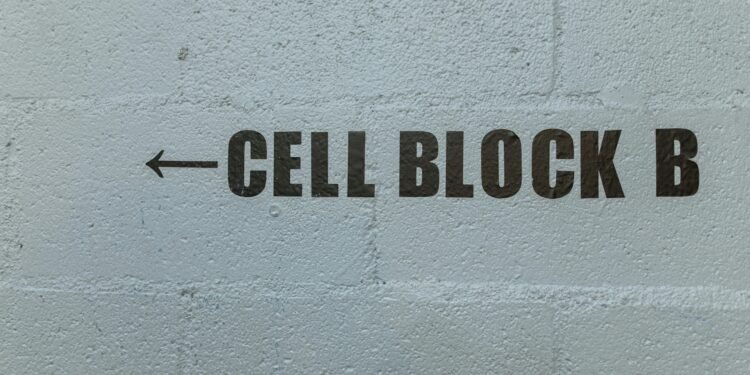Contents
- 1 Bail Bonds 101: A Step-by-Step Guide for Families and Defendants
- 1.1 What is Bail, and How Does It Work?
- 1.1.1 Related posts
- 1.1.2 New Polls Show Ghana’s Opposition Leader Poised for Victory in Upcoming Presidential Election
- 1.1.3 England’s Earps Breaks New Ground as the First Female Footballer Honored at Madame Tussauds
- 1.1.4 Referee David Coote Suspended by PGMOL Following Alleged Verbal Abuse of Liverpool and Klopp in Video
- 1.1.5 UK’s Starmer Set to Meet Macron in France to Strengthen Ukraine Support Following Trump Victory
- 1.1.6 Biden Extends Congratulations to Trump, Extends White House Invitation
- 1.1.7 Trump’s return to power fueled by Hispanic, working-class voter support
- 1.1.8 UK PM Starmer Extends Warm Congratulations in Conversation with Donald Trump
- 1.2 How Bail Bonds Function
- 1.3 The Process of Obtaining a Bail Bond
- 1.4 Paying for a Bail Bond
- 1.5 Understanding Collateral and Its Role in Bail Bonds
- 1.6 Conclusion
- 1.1 What is Bail, and How Does It Work?
Bail Bonds 101: A Step-by-Step Guide for Families and Defendants
Particularly in a difficult situation, the area of bail bonds might seem difficult. This guide dissects it for you. Should you need to get a bond, you will understand what bail is, how it is obtained, and the particular steps to follow. This article seeks to provide families and defendants with the necessary knowledge to successfully navigate the bail bond process by talking through the financial obligations and other important information, thereby guaranteeing you obtain the assistance most needed under tough circumstances.
What is Bail, and How Does It Work?
A cash promise guaranteeing a defendant’s appearance in court following release from jail is bail. The bail system is meant to discourage people from running away from justice and yet provide them the freedom to read their case outside of prison. Should one post bail, they restore temporary freedom but have to satisfy the court attendance requirement. On the other hand, should bail still be unposted, the person stays behind until either court or trial ends. Under other circumstances, bail could not even be an option; in such cases, bail bonds become really important. When one cannot pay the full bail, a bail bond serves as a surety deposit.
How Bail Bonds Function
Bail bonds operate by enabling a defendant or their family to finance a sizable bail sum through a bond service provider. This vendor guarantees the court the defendant will show up for all booked hearings. The bondsman takes care of releasing the defendant from detention after the necessary documentation is finished and the bail payment is fulfilled. The instant the defendant releases himself via bond, they carry out an obligation to show up in court as required. Should the defendant miss court, the bond provider maintains the right to lawfully pursue them and recover any damages resulting from the absence of the defendant.
The Process of Obtaining a Bail Bond
Working with reputable Santa Ana bail bond agents or others in your area can help you by giving important defendant information, completing required papers, and arranging payment arrangements to guarantee a speedy release. Post this, the bonding agent will evaluate whether they can extend the bond and under what conditions. Following approval, one needs to fill in an extensive application form disclosing personal particulars alongside financial data. After thorough scrutiny of this information, and once appropriate payment terms are agreed upon, the bonding agent proceeds with filing necessary documents with the court to facilitate release from jail.
Paying for a Bail Bond
When it comes to financing a bail bond, cash isn’t your only option. Many bond service providers extend alternate payment plans tailored to accommodate varying financial abilities. These could incorporate arrangements like credit plans or even collateral agreements where assets, automobiles, or real estate are put forward as security against the bond cost. However, remember that if such deals are struck, there lies an obligation for the defendant to consistently appear in court. In instances of absenteeism from the court, repercussions directly impact not just the defendant but also those who have co-signed or secured the bond financially. It’s crucial to engage in comprehensive discussions about payment choices with your bonding agent to discover what suits your situation best.
Understanding Collateral and Its Role in Bail Bonds
Particularly in situations where financial limits make upfront cash payments difficult, the bail bond process mostly relies on collateral. Collateral—that is, physical or financial items—such as real estate, cars, jewels, or even savings accounts—that the bond agency pledges to be guaranteed by. This agreement reduces the risk associated with the bail service provider should the defendant not show up for court. Should the defendant fulfill all court responsibilities, the collateral is returned upon case completion. Neglect to comply, however, and these assets might be forfeited to pay for the bail. Knowing the consequences of collateral guarantees families and defendants make wise judgments on bond securing.
Conclusion
Grasping the bail bond procedure can significantly reduce stress during legal tribulations. Knowing what bail is and how bonds function offers clarity on your choices for securing freedom quickly. Although there are particular responsibilities linked with paying bonds and ensuring court appearances, together, they form a vital part of working through the justice system. This walkthrough lays down basic principles aiding defendants and their families in tackling challenges linked with bail bonds without any confusion.
Also Read This – Future-Proof Your Finances: A Step-by-Step Guide to Saving Smarter


















